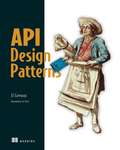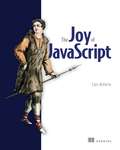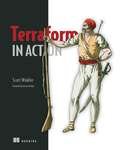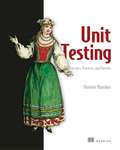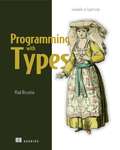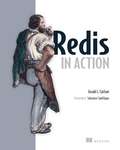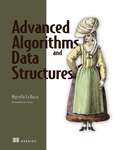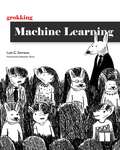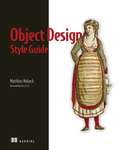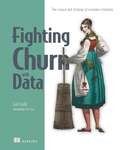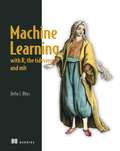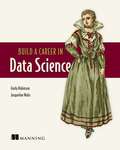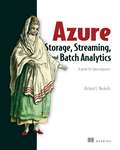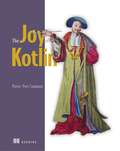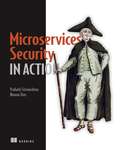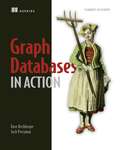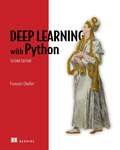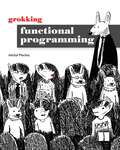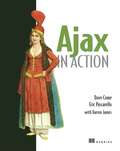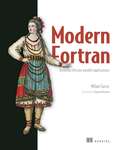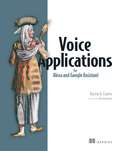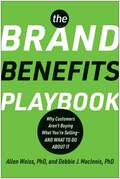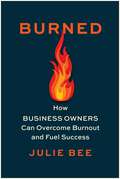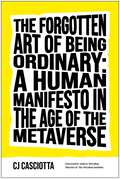- Table View
- List View
API Design Patterns
by JJ GeewaxAPI Design Patterns lays out a set of design principles for building internal and public-facing APIs.Summary A collection of best practices and design standards for web and internal APIs. In API Design Patterns you will learn: Guiding principles for API patterns Fundamentals of resource layout and naming Handling data types for any programming language Standard methods that ensure predictability Field masks for targeted partial updates Authentication and validation methods for secure APIs Collective operations for moving, managing, and deleting data Advanced patterns for special interactions and data transformations API Design Patterns reveals best practices for building stable, user-friendly APIs. These design patterns can be applied to solve common API problems and flexibly altered to fit your specific needs. Hands-on examples and relevant use-cases illustrate patterns for API fundamentals, advanced functionalities, and even uncommon scenarios. Purchase of the print book includes a free eBook in PDF, Kindle, and ePub formats from Manning Publications. About the technology APIs are contracts that define how applications, services, and components communicate. API design patterns provide a shared set of best practices, specifications and standards that ensure APIs are reliable and simple for other developers to use. This book collects and explains the most important patterns from both the API design community and the experts at Google. About the book API Design Patterns lays out a set of design principles for building internal and public-facing APIs. Google API expert JJ Geewax presents patterns that ensure your APIs are consistent, scalable, and flexible. You&’ll improve the design of the most common APIs, plus discover techniques for tricky edge cases. Precise illustrations, relevant examples, and detailed scenarios make every pattern clear and easy to understand. What's inside Guiding principles for API patterns Fundamentals of resource layout and naming Advanced patterns for special interactions and data transformations A detailed case-study on building an API and adding features About the reader For developers building web and internal APIs in any language. About the author JJ Geewax is a software engineer at Google, focusing on Google Cloud Platform, API design, and real-time payment systems. He is also the author of Manning&’s Google Cloud Platform in Action. Table of Contents PART 1 INTRODUCTION 1 Introduction to APIs 2 Introduction to API design patterns PART 2 DESIGN PRINCIPLES 3 Naming 4 Resource scope and hierarchy 5 Data types and defaults PART 3 FUNDAMENTALS 6 Resource identification 7 Standard methods 8 Partial updates and retrievals 9 Custom methods 10 Long-running operations 11 Rerunnable jobs PART 4 RESOURCE RELATIONSHIPS 12 Singleton sub-resources 13 Cross references 14 Association resources 15 Add and remove custom methods 16 Polymorphism PART 5 COLLECTIVE OPERATIONS 17 Copy and move 18 Batch operations 19 Criteria-based deletion 20 Anonymous writes 21 Pagination 22 Filtering 23 Importing and exporting PART 6 SAFETY AND SECURITY 24 Versioning and compatibility 25 Soft deletion 26 Request deduplication 27 Request validation 28 Resource revisions 29 Request retrial 30 Request authentication
The Joy of JavaScript
by Luis AtencioThe Joy of JavaScript introduces techniques that turn JavaScript programmers into JavaScript pros.Summary Whether building interactive browser-based applications or creating server-side applications in Node, JavaScript is the most widely used language for web programming. With new features, language improvements, paradigms, and potential use cases appearing regularly, there&’s never been a more exciting time to be a JavaScript developer. In The Joy of JavaScript, author and JavaScript expert Luis Atencio teaches you key design concepts that lead to clean, lean, modular, and easy-to-maintain code. Purchase of the print book includes a free eBook in PDF, Kindle, and ePub formats from Manning Publications. About the technology JavaScript is at the heart of web applications on the browser side and, via the popular Node.js runtime, it often powers the server side too. Simply put, the web runs on JavaScript. About the book The Joy of JavaScript introduces techniques that turn JavaScript programmers into JavaScript pros. You&’ll work with cutting edge APIs, language features, and coding styles to tackle tricky problems in an elegant manner. Along the way, you&’ll practice good object design, drive business logic with functional thinking, and untangle complex data flows. What's inside JavaScript&’s objects and module system Working with higher order functions Identifying and creating composable software Preparing for upcoming JavaScript features About the reader Written for experienced and passionate JavaScript developers. About the author Luis Atencio is a software engineer for Citrix Systems, author of Manning&’s Functional Programming in JavaScript, and co-author of Manning&’s RxJS in Action. Table of Contents 1 JavaScript reloaded PART 1 - OBJECTS 2 Inheritance-based object modeling 3 Linked, compositional object models PART 2 - FUNCTIONS 4 Writing composable, pure code 5 Higher-kinded composition PART 3 - CODE 6 ECMAScript Modules 7 Hooked on metaprogramming PART 4 - DATA 8 Linear async flows 9 Stream programming
Terraform in Action (In Action Ser.)
by Scott WinklerTerraform in Action shows you how to automate and scale infrastructure programmatically using the Terraform toolkit.Summary In Terraform in Action you will learn: Cloud architecture with Terraform Terraform module sharing and the private module registry Terraform security in a multitenant environment Strategies for performing blue/green deployments Refactoring for code maintenance and reusability Running Terraform at scale Creating your own Terraform provider Using Terraform as a continuous development/continuous delivery platform Terraform in Action introduces the infrastructure-as-code (IaC) model that lets you instantaneously create new components and respond efficiently to changes in demand. You&’ll use the Terraform automation tool to design and manage servers that can be provisioned, shared, changed, tested, and deployed with a single command. Purchase of the print book includes a free eBook in PDF, Kindle, and ePub formats from Manning Publications. About the technology Provision, deploy, scale, and clone your entire stack to the cloud at the touch of a button. In Terraform, you create a collection of simple declarative scripts that define and manage application infrastructure. This powerful infrastructure-as-code approach automates key tasks like versioning and testing for everything from low-level networking to cloud services. About the book Terraform in Action shows you how to automate and scale infrastructure programmatically using the Terraform toolkit. Using practical, relevant examples, you&’ll use Terraform to provision a Kubernetes cluster, deploy a multiplayer game, and configure other hands-on projects. As you progress to advanced techniques like zero-downtime deployments, you&’ll discover how to think in Terraform rather than just copying and pasting scripts. What's inside Cloud architecture with Terraform Terraform module sharing and the private module registry Terraform security in a multitenant environment Strategies for performing blue/green deployments About the reader For readers experienced with a major cloud platform such as AWS. Examples in JavaScript and Golang. About the author Scott Winkler is a DevOps engineer and a distinguished Terraform expert. He has spoken multiple times at HashiTalks and HashiConf, and was selected as a HashiCorp Ambassador and Core Contributor in 2020. Table of Contents PART 1 TERRAFORM BOOTCAMP 1 Getting started with Terraform 2 Life cycle of a Terraform resource 3 Functional programming 4 Deploying a multi-tiered web application in AWS PART 2 TERRAFORM IN THE WILD 5 Serverless made easy 6 Terraform with friends 7 CI/CD pipelines as code 8 A multi-cloud MMORPG PART 3 MASTERING TERRAFORM 9 Zero-downtime deployments 10 Testing and refactoring 11 Extending Terraform by writing a custom provider 12 Automating Terraform 13 Security and secrets management
Unit Testing Principles, Practices, and Patterns: Effective Testing Styles, Patterns, And Reliable Automation For Unit Testing, Mocking, And Integration Testing With Examples In C#
by Vladimir Khorikov"This book is an indispensable resource." - Greg Wright, Kainos Software Ltd. Radically improve your testing practice and software quality with new testing styles, good patterns, and reliable automation. Key Features A practical and results-driven approach to unit testing Refine your existing unit tests by implementing modern best practices Learn the four pillars of a good unit test Safely automate your testing process to save time and money Spot which tests need refactoring, and which need to be deleted entirely Purchase of the print book includes a free eBook in PDF, Kindle, and ePub formats from Manning Publications. About The Book Great testing practices maximize your project quality and delivery speed by identifying bad code early in the development process. Wrong tests will break your code, multiply bugs, and increase time and costs. You owe it to yourself—and your projects—to learn how to do excellent unit testing. Unit Testing Principles, Patterns and Practices teaches you to design and write tests that target key areas of your code including the domain model. In this clearly written guide, you learn to develop professional-quality tests and test suites and integrate testing throughout the application life cycle. As you adopt a testing mindset, you&’ll be amazed at how better tests cause you to write better code. What You Will Learn Universal guidelines to assess any unit test Testing to identify and avoid anti-patterns Refactoring tests along with the production code Using integration tests to verify the whole system This Book Is Written For For readers who know the basics of unit testing. Examples are written in C# and can easily be applied to any language. About the Author Vladimir Khorikov is an author, blogger, and Microsoft MVP. He has mentored numerous teams on the ins and outs of unit testing. Table of Contents: PART 1 THE BIGGER PICTURE 1 ¦ The goal of unit testing 2 ¦ What is a unit test? 3 ¦ The anatomy of a unit test PART 2 MAKING YOUR TESTS WORK FOR YOU 4 ¦ The four pillars of a good unit test 5 ¦ Mocks and test fragility 6 ¦ Styles of unit testing 7 ¦ Refactoring toward valuable unit tests PART 3 INTEGRATION TESTING 8 ¦ Why integration testing? 9 ¦ Mocking best practices 10 ¦ Testing the database PART 4 UNIT TESTING ANTI-PATTERNS 11 ¦ Unit testing anti-patterns
Programming with Types: Examples in TypeScript
by Vlad RiscutiaType-related failures are common and can be very costly. Famously, in 1999, NASA's Mars Climate Orbiter burned up in the atmosphere because of an error that could have easily been prevented with typing. By taking advantage of the strong type systems available in most modern programming languages, you can eliminate whole classes of errors. Programming with Types teaches you type system techniques for writing software that's safe, correct, easy to test and maintain, and that practically documents itself. Master these techniques, and you may even help prevent an interstellar catastrophe!Purchase of the print book includes a free eBook in PDF, Kindle, and ePub formats from Manning Publications.
Redis in Action
by Josiah CarlsonSummaryRedis in Action introduces Redis and walks you through examples that demonstrate how to use it effectively. You'll begin by getting Redis set up properly and then exploring the key-value model. Then, you'll dive into real use cases including simple caching, distributed ad targeting, and more. You'll learn how to scale Redis from small jobs to massive datasets. Experienced developers will appreciate chapters on clustering and internal scripting to make Redis easier to use.About the TechnologyWhen you need near-real-time access to a fast-moving data stream, key-value stores like Redis are the way to go. Redis expands on the key-value pattern by accepting a wide variety of data types, including hashes, strings, lists, and other structures. It provides lightning-fast operations on in-memory datasets, and also makes it easy to persist to disk on the fly. Plus, it's free and open source.About this bookRedis in Action introduces Redis and the key-value model. You'll quickly dive into real use cases including simple caching, distributed ad targeting, and more. You'll learn how to scale Redis from small jobs to massive datasets and discover how to integrate with traditional RDBMS or other NoSQL stores. Experienced developers will appreciate the in-depth chapters on clustering and internal scripting.Written for developers familiar with database concepts. No prior exposure to NoSQL database concepts nor to Redis itself is required. Appropriate for systems administrators comfortable with programming.Purchase of the print book includes a free eBook in PDF, Kindle, and ePub formats from Manning Publications.What's InsideRedis from the ground upPreprocessing real-time dataManaging in-memory datasetsPub/sub and configurationPersisting to diskAbout the AuthorDr. Josiah L. Carlson is a seasoned database professional and an active contributor to the Redis community.Table of ContentsPART 1 GETTING STARTEDGetting to know RedisAnatomy of a Redis web applicationPART 2 CORE CONCEPTSCommands in RedisKeeping data safe and ensuring performanceUsing Redis for application supportApplication components in RedisSearch-based applicationsBuilding a simple social networkPART 3 NEXT STEPSReducing memory useScaling RedisScripting Redis with Lua
Advanced Algorithms and Data Structures
by Marcello La RoccaAdvanced Algorithms and Data Structures introduces a collection of algorithms for complex programming challenges in data analysis, machine learning, and graph computing.Summary As a software engineer, you&’ll encounter countless programming challenges that initially seem confusing, difficult, or even impossible. Don&’t despair! Many of these &“new&” problems already have well-established solutions. Advanced Algorithms and Data Structures teaches you powerful approaches to a wide range of tricky coding challenges that you can adapt and apply to your own applications. Providing a balanced blend of classic, advanced, and new algorithms, this practical guide upgrades your programming toolbox with new perspectives and hands-on techniques. Purchase of the print book includes a free eBook in PDF, Kindle, and ePub formats from Manning Publications. About the technology Can you improve the speed and efficiency of your applications without investing in new hardware? Well, yes, you can: Innovations in algorithms and data structures have led to huge advances in application performance. Pick up this book to discover a collection of advanced algorithms that will make you a more effective developer. About the book Advanced Algorithms and Data Structures introduces a collection of algorithms for complex programming challenges in data analysis, machine learning, and graph computing. You&’ll discover cutting-edge approaches to a variety of tricky scenarios. You&’ll even learn to design your own data structures for projects that require a custom solution. What's inside Build on basic data structures you already know Profile your algorithms to speed up application Store and query strings efficiently Distribute clustering algorithms with MapReduce Solve logistics problems using graphs and optimization algorithms About the reader For intermediate programmers. About the author Marcello La Rocca is a research scientist and a full-stack engineer. His focus is on optimization algorithms, genetic algorithms, machine learning, and quantum computing. Table of Contents 1 Introducing data structures PART 1 IMPROVING OVER BASIC DATA STRUCTURES 2 Improving priority queues: d-way heaps 3 Treaps: Using randomization to balance binary search trees 4 Bloom filters: Reducing the memory for tracking content 5 Disjoint sets: Sub-linear time processing 6 Trie, radix trie: Efficient string search 7 Use case: LRU cache PART 2 MULTIDEMENSIONAL QUERIES 8 Nearest neighbors search 9 K-d trees: Multidimensional data indexing 10 Similarity Search Trees: Approximate nearest neighbors search for image retrieval 11 Applications of nearest neighbor search 12 Clustering 13 Parallel clustering: MapReduce and canopy clustering PART 3 PLANAR GRAPHS AND MINIMUM CROSSING NUMBER 14 An introduction to graphs: Finding paths of minimum distance 15 Graph embeddings and planarity: Drawing graphs with minimal edge intersections 16 Gradient descent: Optimization problems (not just) on graphs 17 Simulated annealing: Optimization beyond local minima 18 Genetic algorithms: Biologically inspired, fast-converging optimization
Grokking Machine Learning
by Luis SerranoDiscover valuable machine learning techniques you can understand and apply using just high-school math.In Grokking Machine Learning you will learn: Supervised algorithms for classifying and splitting data Methods for cleaning and simplifying data Machine learning packages and tools Neural networks and ensemble methods for complex datasets Grokking Machine Learning teaches you how to apply ML to your projects using only standard Python code and high school-level math. No specialist knowledge is required to tackle the hands-on exercises using Python and readily available machine learning tools. Packed with easy-to-follow Python-based exercises and mini-projects, this book sets you on the path to becoming a machine learning expert. Purchase of the print book includes a free eBook in PDF, Kindle, and ePub formats from Manning Publications. About the technology Discover powerful machine learning techniques you can understand and apply using only high school math! Put simply, machine learning is a set of techniques for data analysis based on algorithms that deliver better results as you give them more data. ML powers many cutting-edge technologies, such as recommendation systems, facial recognition software, smart speakers, and even self-driving cars. This unique book introduces the core concepts of machine learning, using relatable examples, engaging exercises, and crisp illustrations. About the book Grokking Machine Learning presents machine learning algorithms and techniques in a way that anyone can understand. This book skips the confused academic jargon and offers clear explanations that require only basic algebra. As you go, you&’ll build interesting projects with Python, including models for spam detection and image recognition. You&’ll also pick up practical skills for cleaning and preparing data. What's inside Supervised algorithms for classifying and splitting data Methods for cleaning and simplifying data Machine learning packages and tools Neural networks and ensemble methods for complex datasets About the reader For readers who know basic Python. No machine learning knowledge necessary. About the author Luis G. Serrano is a research scientist in quantum artificial intelligence. Previously, he was a Machine Learning Engineer at Google and Lead Artificial Intelligence Educator at Apple. Table of Contents 1 What is machine learning? It is common sense, except done by a computer 2 Types of machine learning 3 Drawing a line close to our points: Linear regression 4 Optimizing the training process: Underfitting, overfitting, testing, and regularization 5 Using lines to split our points: The perceptron algorithm 6 A continuous approach to splitting points: Logistic classifiers 7 How do you measure classification models? Accuracy and its friends 8 Using probability to its maximum: The naive Bayes model 9 Splitting data by asking questions: Decision trees 10 Combining building blocks to gain more power: Neural networks 11 Finding boundaries with style: Support vector machines and the kernel method 12 Combining models to maximize results: Ensemble learning 13 Putting it all in practice: A real-life example of data engineering and machine learning
Object Design Style Guide: Powerful Techniques For Creating Flexible, Readable, And Maintainable Object-oriented Code In Any Oo Language, From Python To Php
by Matthias Noback&”Demystifies object-oriented programming, and lays out how to use it to design truly secure and performant applications.&” —Charles Soetan, Plum.io Key Features Dozens of techniques for writing object-oriented code that&’s easy to read, reuse, and maintain Write code that other programmers will instantly understand Design rules for constructing objects, changing and exposing state, and more Examples written in an instantly familiar pseudocode that&’s easy to apply to Java, Python, C#, and any object-oriented language Purchase of the print book includes a free eBook in PDF, Kindle, and ePub formats from Manning Publications.About The Book Well-written object-oriented code is easy to read, modify, and debug. Elevate your coding style by mastering the universal best practices for object design presented in this book. These clearly presented rules, which apply to any OO language, maximize the clarity and durability of your codebase and increase productivity for you and your team. In Object Design Style Guide, veteran developer Matthias Noback lays out design rules for constructing objects, defining methods, and much more. All examples use instantly familiar pseudocode, so you can follow along in the language you prefer. You&’ll go case by case through important scenarios and challenges for object design and then walk through a simple web application that demonstrates how different types of objects can work together effectively. What You Will Learn Universal design rules for a wide range of objects Best practices for testing objects A catalog of common object types Changing and exposing state Test your object design skills with exercises This Book Is Written For For readers familiar with an object-oriented language and basic application architecture. About the Author Matthias Noback is a professional web developer with nearly two decades of experience. He runs his own web development, training, and consultancy company called &“Noback&’s Office.&” Table of Contents: 1 ¦ Programming with objects: A primer 2 ¦ Creating services 3 ¦ Creating other objects 4 ¦ Manipulating objects 5 ¦ Using objects 6 ¦ Retrieving information 7 ¦ Performing tasks 8 ¦ Dividing responsibilities 9 ¦ Changing the behavior of services 10 ¦ A field guide to objects 11 ¦ Epilogue
Fighting Churn with Data: The science and strategy of customer retention
by Carl GoldThe beating heart of any product or service business is returning clients. Don't let your hard-won customers vanish, taking their money with them. In Fighting Churn with Data you'll learn powerful data-driven techniques to maximize customer retention and minimize actions that cause them to stop engaging or unsubscribe altogether.Summary The beating heart of any product or service business is returning clients. Don't let your hard-won customers vanish, taking their money with them. In Fighting Churn with Data you'll learn powerful data-driven techniques to maximize customer retention and minimize actions that cause them to stop engaging or unsubscribe altogether. This hands-on guide is packed with techniques for converting raw data into measurable metrics, testing hypotheses, and presenting findings that are easily understandable to non-technical decision makers. Purchase of the print book includes a free eBook in PDF, Kindle, and ePub formats from Manning Publications. About the technology Keeping customers active and engaged is essential for any business that relies on recurring revenue and repeat sales. Customer turnover—or &“churn&”—is costly, frustrating, and preventable. By applying the techniques in this book, you can identify the warning signs of churn and learn to catch customers before they leave. About the book Fighting Churn with Data teaches developers and data scientists proven techniques for stopping churn before it happens. Packed with real-world use cases and examples, this book teaches you to convert raw data into measurable behavior metrics, calculate customer lifetime value, and improve churn forecasting with demographic data. By following Zuora Chief Data Scientist Carl Gold&’s methods, you&’ll reap the benefits of high customer retention. What's inside Calculating churn metrics Identifying user behavior that predicts churn Using churn reduction tactics with customer segmentation Applying churn analysis techniques to other business areas Using AI for accurate churn forecasting About the reader For readers with basic data analysis skills, including Python and SQL. About the author Carl Gold (PhD) is the Chief Data Scientist at Zuora, Inc., the industry-leading subscription management platform. Table of Contents: PART 1 - BUILDING YOUR ARSENAL 1 The world of churn 2 Measuring churn 3 Measuring customers 4 Observing renewal and churn PART 2 - WAGING THE WAR 5 Understanding churn and behavior with metrics 6 Relationships between customer behaviors 7 Segmenting customers with advanced metrics PART 3 - SPECIAL WEAPONS AND TACTICS 8 Forecasting churn 9 Forecast accuracy and machine learning 10 Churn demographics and firmographics 11 Leading the fight against churn
Machine Learning with R, the tidyverse, and mlr
by Hefin RhysSummary Machine learning (ML) is a collection of programming techniques for discovering relationships in data. With ML algorithms, you can cluster and classify data for tasks like making recommendations or fraud detection and make predictions for sales trends, risk analysis, and other forecasts. Once the domain of academic data scientists, machine learning has become a mainstream business process, and tools like the easy-to-learn R programming language put high-quality data analysis in the hands of any programmer. Machine Learning with R, the tidyverse, and mlr teaches you widely used ML techniques and how to apply them to your own datasets using the R programming language and its powerful ecosystem of tools. This book will get you started! Purchase of the print book includes a free eBook in PDF, Kindle, and ePub formats from Manning Publications. About the book Machine Learning with R, the tidyverse, and mlr gets you started in machine learning using R Studio and the awesome mlr machine learning package. This practical guide simplifies theory and avoids needlessly complicated statistics or math. All core ML techniques are clearly explained through graphics and easy-to-grasp examples. In each engaging chapter, you&’ll put a new algorithm into action to solve a quirky predictive analysis problem, including Titanic survival odds, spam email filtering, and poisoned wine investigation. What's inside Using the tidyverse packages to process and plot your data Techniques for supervised and unsupervised learning Classification, regression, dimension reduction, and clustering algorithms Statistics primer to fill gaps in your knowledge About the reader For newcomers to machine learning with basic skills in R. About the author Hefin I. Rhys is a senior laboratory research scientist at the Francis Crick Institute. He runs his own YouTube channel of screencast tutorials for R and RStudio. Table of contents: PART 1 - INTRODUCTION 1.Introduction to machine learning 2. Tidying, manipulating, and plotting data with the tidyverse PART 2 - CLASSIFICATION 3. Classifying based on similarities with k-nearest neighbors 4. Classifying based on odds with logistic regression 5. Classifying by maximizing separation with discriminant analysis 6. Classifying with naive Bayes and support vector machines 7. Classifying with decision trees 8. Improving decision trees with random forests and boosting PART 3 - REGRESSION 9. Linear regression 10. Nonlinear regression with generalized additive models 11. Preventing overfitting with ridge regression, LASSO, and elastic net 12. Regression with kNN, random forest, and XGBoost PART 4 - DIMENSION REDUCTION 13. Maximizing variance with principal component analysis 14. Maximizing similarity with t-SNE and UMAP 15. Self-organizing maps and locally linear embedding PART 5 - CLUSTERING 16. Clustering by finding centers with k-means 17. Hierarchical clustering 18. Clustering based on density: DBSCAN and OPTICS 19. Clustering based on distributions with mixture modeling 20. Final notes and further reading
Build a Career in Data Science
by Emily Robinson Jacqueline NolisSummary You are going to need more than technical knowledge to succeed as a data scientist. Build a Career in Data Science teaches you what school leaves out, from how to land your first job to the lifecycle of a data science project, and even how to become a manager. Purchase of the print book includes a free eBook in PDF, Kindle, and ePub formats from Manning Publications. About the technology What are the keys to a data scientist&’s long-term success? Blending your technical know-how with the right &“soft skills&” turns out to be a central ingredient of a rewarding career. About the book Build a Career in Data Science is your guide to landing your first data science job and developing into a valued senior employee. By following clear and simple instructions, you&’ll learn to craft an amazing resume and ace your interviews. In this demanding, rapidly changing field, it can be challenging to keep projects on track, adapt to company needs, and manage tricky stakeholders. You&’ll love the insights on how to handle expectations, deal with failures, and plan your career path in the stories from seasoned data scientists included in the book. What's inside Creating a portfolio of data science projects Assessing and negotiating an offer Leaving gracefully and moving up the ladder Interviews with professional data scientists About the reader For readers who want to begin or advance a data science career. About the author Emily Robinson is a data scientist at Warby Parker. Jacqueline Nolis is a data science consultant and mentor. Table of Contents: PART 1 - GETTING STARTED WITH DATA SCIENCE 1. What is data science? 2. Data science companies 3. Getting the skills 4. Building a portfolio PART 2 - FINDING YOUR DATA SCIENCE JOB 5. The search: Identifying the right job for you 6. The application: Résumés and cover letters 7. The interview: What to expect and how to handle it 8. The offer: Knowing what to accept PART 3 - SETTLING INTO DATA SCIENCE 9. The first months on the job 10. Making an effective analysis 11. Deploying a model into production 12. Working with stakeholders PART 4 - GROWING IN YOUR DATA SCIENCE ROLE 13. When your data science project fails 14. Joining the data science community 15. Leaving your job gracefully 16. Moving up the ladder
Azure Storage, Streaming, and Batch Analytics: A guide for data engineers
by Richard NuckollsThe Microsoft Azure cloud is an ideal platform for data-intensive applications. Designed for productivity, Azure provides pre-built services that make collection, storage, and analysis much easier to implement and manage. Azure Storage, Streaming, and Batch Analytics teaches you how to design a reliable, performant, and cost-effective data infrastructure in Azure by progressively building a complete working analytics system.Summary The Microsoft Azure cloud is an ideal platform for data-intensive applications. Designed for productivity, Azure provides pre-built services that make collection, storage, and analysis much easier to implement and manage. Azure Storage, Streaming, and Batch Analytics teaches you how to design a reliable, performant, and cost-effective data infrastructure in Azure by progressively building a complete working analytics system. Purchase of the print book includes a free eBook in PDF, Kindle, and ePub formats from Manning Publications. About the technology Microsoft Azure provides dozens of services that simplify storing and processing data. These services are secure, reliable, scalable, and cost efficient. About the book Azure Storage, Streaming, and Batch Analytics shows you how to build state-of-the-art data solutions with tools from the Microsoft Azure platform. Read along to construct a cloud-native data warehouse, adding features like real-time data processing. Based on the Lambda architecture for big data, the design uses scalable services such as Event Hubs, Stream Analytics, and SQL databases. Along the way, you&’ll cover most of the topics needed to earn an Azure data engineering certification. What's inside Configuring Azure services for speed and cost Constructing data pipelines with Data Factory Choosing the right data storage methods About the reader For readers familiar with database management. Examples in C# and PowerShell. About the author Richard Nuckolls is a senior developer building big data analytics and reporting systems in Azure. Table of Contents 1 What is data engineering? 2 Building an analytics system in Azure 3 General storage with Azure Storage accounts 4 Azure Data Lake Storage 5 Message handling with Event Hubs 6 Real-time queries with Azure Stream Analytics 7 Batch queries with Azure Data Lake Analytics 8 U-SQL for complex analytics 9 Integrating with Azure Data Lake Analytics 10 Service integration with Azure Data Factory 11 Managed SQL with Azure SQL Database 12 Integrating Data Factory with SQL Database 13 Where to go next
Practices of the Python Pro
by Dane HillardSummary Professional developers know the many benefits of writing application code that&’s clean, well-organized, and easy to maintain. By learning and following established patterns and best practices, you can take your code and your career to a new level. With Practices of the Python Pro, you&’ll learn to design professional-level, clean, easily maintainable software at scale using the incredibly popular programming language, Python. You&’ll find easy-to-grok examples that use pseudocode and Python to introduce software development best practices, along with dozens of instantly useful techniques that will help you code like a pro. Purchase of the print book includes a free eBook in PDF, Kindle, and ePub formats from Manning Publications. About the technology Professional-quality code does more than just run without bugs. It&’s clean, readable, and easy to maintain. To step up from a capable Python coder to a professional developer, you need to learn industry standards for coding style, application design, and development process. That&’s where this book is indispensable. About the book Practices of the Python Pro teaches you to design and write professional-quality software that&’s understandable, maintainable, and extensible. Dane Hillard is a Python pro who has helped many dozens of developers make this step, and he knows what it takes. With helpful examples and exercises, he teaches you when, why, and how to modularize your code, how to improve quality by reducing complexity, and much more. Embrace these core principles, and your code will become easier for you and others to read, maintain, and reuse. What's inside Organizing large Python projects Achieving the right levels of abstraction Writing clean, reusable code Inheritance and composition Considerations for testing and performance About the reader For readers familiar with the basics of Python, or another OO language. About the author Dane Hillard has spent the majority of his development career using Python to build web applications. Table of Contents: PART 1 WHY IT ALL MATTERS 1 ¦ The bigger picture PART 2 FOUNDATIONS OF DESIGN 2 ¦ Separation of concerns 3 ¦ Abstraction and encapsulation 4 ¦ Designing for high performance 5 ¦ Testing your software PART 3 NAILING DOWN LARGE SYSTEMS 6 ¦ Separation of concerns in practice 7 ¦ Extensibility and flexibility 8 ¦ The rules (and exceptions) of inheritance 9 ¦ Keeping things lightweight 10 ¦ Achieving loose coupling PART 4 WHAT&’S NEXT? 11 ¦ Onward and upward
The Joy of Kotlin
by Pierre-Yves SaumontSummaryMaintaining poor legacy code, interpreting cryptic comments, and writing the same boilerplate over and over can suck the joy out of your life as a Java developer. Fear not! There's hope! Kotlin is an elegant JVM language with modern features and easy integration with Java. The Joy of Kotlin teaches you practical techniques to improve abstraction and design, to write comprehensible code, and to build maintainable bug-free applications.Purchase of the print book includes a free eBook in PDF, Kindle, and ePub formats from Manning Publications.About the TechnologyYour programming language should be expressive, safe, flexible, and intuitive, and Kotlin checks all the boxes! This elegant JVM language integrates seamlessly with Java, and makes it a breeze to switch between OO and functional styles of programming. It's also fully supported by Google as a first-class Android language. Master the powerful techniques in this unique book, and you'll be able to take on new challenges with increased confidence and skill.About the BookThe Joy of Kotlin teaches you to write comprehensible, easy-to-maintain, safe programs with Kotlin. In this expert guide, seasoned engineer Pierre-Yves Saumont teaches you to approach common programming challenges with a fresh, FP-inspired perspective. As you work through the many examples, you'll dive deep into handling errors and data properly, managing state, and taking advantage of laziness. The author's down-to-earth examples and experience-driven insights will make you a better—and more joyful—developer!What's insideProgramming with functionsDealing with optional dataSafe handling of errors and exceptionsHandling and sharing state mutationAbout the ReaderWritten for intermediate Java or Kotlin developers.About the AuthorPierre-Yves Saumont is a senior software engineer at Alcatel-Submarine Networks. He's the author of Functional Programming in Java (Manning, 2017).Table of ContentsMaking programs saferFunctional programming in Kotlin: An overviewProgramming with functionsRecursion, corecursion, and memoizationData handling with listsDealing with optional dataHandling errors and exceptionsAdvanced list handlingWorking with lazinessMore data handling with treesSolving problems with advanced treesFunctional input/outputSharing mutable states with actorsSolving common problems functionally
Microservices Security in Action: Design Secure Network And Api Endpoint Security For Microservices Applications, With Examples Using Java, Kubernetes, And Istio (In Action Ser.)
by Prabath Siriwardena Wajjakkara Kankanamge Dias&”A complete guide to the challenges and solutions in securing microservices architectures.&” —Massimo Siani, FinDynamic Key Features Secure microservices infrastructure and code Monitoring, access control, and microservice-to-microservice communications Deploy securely using Kubernetes, Docker, and the Istio service mesh. Hands-on examples and exercises using Java and Spring Boot Purchase of the print book includes a free eBook in PDF, Kindle, and ePub formats from Manning Publications. Microservices Security in Action teaches you how to address microservices-specific security challenges throughout the system. This practical guide includes plentiful hands-on exercises using industry-leading open-source tools and examples using Java and Spring Boot. About The Book Design and implement security into your microservices from the start. Microservices Security in Action teaches you to assess and address security challenges at every level of a Microservices application, from APIs to infrastructure. You&’ll find effective solutions to common security problems, including throttling and monitoring, access control at the API gateway, and microservice-to-microservice communication. Detailed Java code samples, exercises, and real-world business use cases ensure you can put what you&’ve learned into action immediately. What You Will Learn Microservice security concepts Edge services with an API gateway Deployments with Docker, Kubernetes, and Istio Security testing at the code level Communications with HTTP, gRPC, and Kafka This Book Is Written For For experienced microservices developers with intermediate Java skills. About The Author Prabath Siriwardena is the vice president of security architecture at WSO2. Nuwan Dias is the director of API architecture at WSO2. They have designed secure systems for many Fortune 500 companies. Table of Contents PART 1 OVERVIEW 1 Microservices security landscape 2 First steps in securing microservices PART 2 EDGE SECURITY 3 Securing north/south traffic with an API gateway 4 Accessing a secured microservice via a single-page application 5 Engaging throttling, monitoring, and access control PART 3 SERVICE-TO-SERVICE COMMUNICATIONS 6 Securing east/west traffic with certificates 7 Securing east/west traffic with JWT 8 Securing east/west traffic over gRPC 9 Securing reactive microservices PART 4 SECURE DEPLOYMENT 10 Conquering container security with Docker 11 Securing microservices on Kubernetes 12 Securing microservices with Istio service mesh PART 5 SECURE DEVELOPMENT 13 Secure coding practices and automation
Graph Databases in Action: Examples in Gremlin (In Action Ser.)
by Josh Perryman Dave BechbergerGraph Databases in Action introduces you to graph database concepts by comparing them with relational database constructs. You'll learn just enough theory to get started, then progress to hands-on development. Discover use cases involving social networking, recommendation engines, and personalization.Summary Relationships in data often look far more like a web than an orderly set of rows and columns. Graph databases shine when it comes to revealing valuable insights within complex, interconnected data such as demographics, financial records, or computer networks. In Graph Databases in Action, experts Dave Bechberger and Josh Perryman illuminate the design and implementation of graph databases in real-world applications. You'll learn how to choose the right database solutions for your tasks, and how to use your new knowledge to build agile, flexible, and high-performing graph-powered applications! Purchase of the print book includes a free eBook in PDF, Kindle, and ePub formats from Manning Publications. About the technology Isolated data is a thing of the past! Now, data is connected, and graph databases—like Amazon Neptune, Microsoft Cosmos DB, and Neo4j—are the essential tools of this new reality. Graph databases represent relationships naturally, speeding the discovery of insights and driving business value. About the book Graph Databases in Action introduces you to graph database concepts by comparing them with relational database constructs. You'll learn just enough theory to get started, then progress to hands-on development. Discover use cases involving social networking, recommendation engines, and personalization. What's inside Graph databases vs. relational databases Systematic graph data modeling Querying and navigating a graph Graph patterns Pitfalls and antipatterns About the reader For software developers. No experience with graph databases required. About the author Dave Bechberger and Josh Perryman have decades of experience building complex data-driven systems and have worked with graph databases since 2014. Table of Contents PART 1 - GETTING STARTED WITH GRAPH DATABASES 1 Introduction to graphs 2 Graph data modeling 3 Running basic and recursive traversals 4 Pathfinding traversals and mutating graphs 5 Formatting results 6 Developing an application PART 2 - BUILDING ON GRAPH DATABASES 7 Advanced data modeling techniques 8 Building traversals using known walks 9 Working with subgraphs PART 3 - MOVING BEYOND THE BASICS 10 Performance, pitfalls, and anti-patterns 11 What's next: Graph analytics, machine learning, and resources
Deep Learning with Python, Second Edition
by Francois CholletUnlock the groundbreaking advances of deep learning with this extensively revised edition of the bestselling original. Learn directly from the creator of Keras and master practical Python deep learning techniques that are easy to apply in the real world.In Deep Learning with Python, Second Edition you will learn: Deep learning from first principles Image classification & image segmentation Timeseries forecasting Text classification and machine translation Text generation, neural style transfer, and image generation Deep Learning with Python has taught thousands of readers how to put the full capabilities of deep learning into action. This extensively revised second edition introduces deep learning using Python and Keras, and is loaded with insights for both novice and experienced ML practitioners. You&’ll learn practical techniques that are easy to apply in the real world, and important theory for perfecting neural networks. Purchase of the print book includes a free eBook in PDF, Kindle, and ePub formats from Manning Publications. About the technology Recent innovations in deep learning unlock exciting new software capabilities like automated language translation, image recognition, and more. Deep learning is becoming essential knowledge for every software developer, and modern tools like Keras and TensorFlow put it within your reach, even if you have no background in mathematics or data science. About the book Deep Learning with Python, Second Edition introduces the field of deep learning using Python and the powerful Keras library. In this new edition, Keras creator François Chollet offers insights for both novice and experienced machine learning practitioners. As you move through this book, you&’ll build your understanding through intuitive explanations, crisp illustrations, and clear examples. You&’ll pick up the skills to start developing deep-learning applications. What's inside Deep learning from first principles Image classification and image segmentation Time series forecasting Text classification and machine translation Text generation, neural style transfer, and image generation About the reader For readers with intermediate Python skills. No previous experience with Keras, TensorFlow, or machine learning is required. About the author François Chollet is a software engineer at Google and creator of the Keras deep-learning library. Table of Contents 1 What is deep learning? 2 The mathematical building blocks of neural networks 3 Introduction to Keras and TensorFlow 4 Getting started with neural networks: Classification and regression 5 Fundamentals of machine learning 6 The universal workflow of machine learning 7 Working with Keras: A deep dive 8 Introduction to deep learning for computer vision 9 Advanced deep learning for computer vision 10 Deep learning for timeseries 11 Deep learning for text 12 Generative deep learning 13 Best practices for the real world 14 Conclusions
Grokking Functional Programming
by Michal PlachtaThere&’s no need to fear going functional! This friendly, lively, and engaging guide is perfect for any perplexed programmer. It lays out the principles of functional programming in a simple and concise way that will help you grok what FP is really all about.In Grokking Functional Programming you will learn: Designing with functions and types instead of objects Programming with pure functions and immutable values Writing concurrent programs using the functional style Testing functional programs Multiple learning approaches to help you grok each new concept If you&’ve ever found yourself rolling your eyes at functional programming, this is the book for you. Open up Grokking Functional Programming and you&’ll find functional ideas mapped onto what you already know as an object-oriented programmer. The book focuses on practical aspects from page one. Hands-on examples apply functional principles to everyday programming tasks like concurrency, error handling, and improving readability. Plus, puzzles and exercises let you think and practice what you're learning. You&’ll soon reach an amazing &“aha&” moment and start seeing code in a completely new way. About the technology Finally, there&’s an easy way to learn functional programming! This unique book starts with the familiar ideas of OOP and introduces FP step-by-step using relevant examples, engaging exercises, and lots of illustrations. You&’ll be amazed at how quickly you&’ll start seeing software tasks from this valuable new perspective. About the book Grokking Functional Programming introduces functional programming to imperative developers. You&’ll start with small, comfortable coding tasks that expose basic concepts like writing pure functions and working with immutable data. Along the way, you&’ll learn how to write code that eliminates common bugs caused by complex distributed state. You&’ll also explore the FP approach to IO, concurrency, and data streaming. By the time you finish, you&’ll be writing clean functional code that&’s easy to understand, test, and maintain. What's inside Designing with functions and types instead of objects Programming with pure functions and immutable values Writing concurrent programs using the functional style Testing functional programs About the reader For developers who know an object-oriented language. Examples in Java and Scala. About the author Michal Plachta is an experienced software developer who regularly speaks and writes about creating maintainable applications. Table of Contents Part 1 The functional toolkit 1 Learning functional programming 2 Pure functions 3 Immutable values 4 Functions as values Part 2 Functional programs 5 Sequential programs 6 Error handling 7 Requirements as types 8 IO as values 9 Streams as values 10 Concurrent programs Part 3 Applied functional programming 11 Designing functional programs 12 Testing functional programs
Ajax in Action
by Eric Pascarello Dave Crane Darren JamesVal's Blog"A tremendously useful field guide specifically written for developers down in the trenches...waiting for the killer solution..."Web users are getting tired of the traditional web experience. They get frustrated losing their scroll position; they get annoyed waiting for refresh; they struggle to reorient themselves on every new page. And the list goes on. With asynchronous JavaScript and XML, known as "Ajax," you can give them a better experience. Once users have experienced an Ajax interface, they hate to go back. Ajax is new way of thinking that can result in a flowing and intuitive interaction with the user.Ajax in Action helps you implement that thinking--it explains how to distribute the application between the client and the server (hint: use a "nested MVC" design) while retaining the integrity of the system. You will learn how to ensure your app is flexible and maintainable, and how good, structured design can help avoid problems like browser incompatibilities. Along the way it helps you unlearn many old coding habits. Above all, it opens your mind to the many advantages gained by placing much of the processing in the browser. If you are a web developer who has prior experience with web technologies, this book is for you. Purchase of the print book comes with an offer of a free PDF, ePub, and Kindle eBook from Manning. Also available is all code from the book.
Modern Fortran: Building efficient parallel applications
by Milan CurcicModern Fortran teaches you to develop fast, efficient parallel applications using twenty-first-century Fortran. In this guide, you&’ll dive into Fortran by creating fun apps, including a tsunami simulator and a stock price analyzer. Filled with real-world use cases, insightful illustrations, and hands-on exercises, Modern Fortran helps you see this classic language in a whole new light.Summary Using Fortran, early and accurate forecasts for hurricanes and other major storms have saved thousands of lives. Better designs for ships, planes, and automobiles have made travel safer, more efficient, and less expensive than ever before. Using Fortran, low-level machine learning and deep learning libraries provide incredibly easy, fast, and insightful analysis of massive data. Fortran is an amazingly powerful and flexible programming language that forms the foundation of high performance computing for research, science, and industry. And it's come a long, long way since starting life on IBM mainframes in 1956. Modern Fortran is natively parallel, so it's uniquely suited for efficiently handling problems like complex simulations, long-range predictions, and ultra-precise designs. If you're working on tasks where speed, accuracy, and efficiency matter, it's time to discover—or re-discover—Fortran.. About the technology For over 60 years Fortran has been powering mission-critical scientific applications, and it isn't slowing down yet! Rock-solid reliability and new support for parallel programming make Fortran an essential language for next-generation high-performance computing. Simply put, the future is in parallel, and Fortran is already there. Purchase of the print book includes a free eBook in PDF, Kindle, and ePub formats from Manning Publications. About the book Modern Fortran teaches you to develop fast, efficient parallel applications using twenty-first-century Fortran. In this guide, you'll dive into Fortran by creating fun apps, including a tsunami simulator and a stock price analyzer. Filled with real-world use cases, insightful illustrations, and hands-on exercises, Modern Fortran helps you see this classic language in a whole new light. What's inside Fortran's place in the modern world Working with variables, arrays, and functions Module development Parallelism with coarrays, teams, and events Interoperating Fortran with C About the reader For developers and computational scientists. No experience with Fortran required. About the author Milan Curcic is a meteorologist, oceanographer, and author of several general-purpose Fortran libraries and applications. Table of Contents PART 1 - GETTING STARTED WITH MODERN FORTRAN 1 Introducing Fortran 2 Getting started: Minimal working app PART 2 - CORE ELEMENTS OF FORTRAN 3 Writing reusable code with functions and subroutines 4 Organizing your Fortran code using modules 5 Analyzing time series data with arrays 6 Reading, writing, and formatting your data PART 3 - ADVANCED FORTRAN USE 7 Going parallel with Fortan coarrays 8 Working with abstract data using derived types 9 Generic procedures and operators for any data type 10 User-defined operators for derived types PART 4 - THE FINAL STRETCH 11 Interoperability with C: Exposing your app to the web 12 Advanced parallelism with teams, events, and collectives
Voice Applications for Alexa and Google Assistant
by Dustin CoatesSummaryVoice Applications for Alexa and Google Assistant is your guide to designing, building, and implementing voice-based applications for Alexa and Google Assistant. Inside, you'll learn how to build your own "skills"—the voice app term for actions the device can perform—from scratch.Foreword by Max Amordeluso.Purchase of the print book includes a free eBook in PDF, Kindle, and ePub formats from Manning Publications. You'll find registration instructions inside the print book.About the TechnologyIn 2018, an estimated 100 million voice-controlled devices were installed in homes worldwide, and the apps that control them, like Amazon Alexa and Google Assistant, are getting more powerful, with new skills being added every day. Great voice apps improve how users interact with the web, whether they're checking the weather, asking for sports scores, or playing a game.About the BookVoice Applications for Alexa and Google Assistant is your guide to designing, building, and implementing voice-based applications for Alexa and Google Assistant. You'll learn to build applications that listen to users, store information, and rely on user context, as you create a voice-powered sleep tracker from scratch. With the basics mastered, you'll dig deeper into multiuse conversational flow and other more-advanced concepts. Smaller projects along the way reinforce your new techniques and best practices. What's insideBuilding a call-and-response skillDesigning a voice user interfaceUsing conversational contextGoing multimodalTips and best practicesAbout the ReaderPerfect for developers with intermediate JavaScript skills and basic Node.js skills. No previous experience with voice-first platforms is required.About the AuthorDustin A. Coates is a developer who focuses on voice and conversational applications. He's currently the voice search lead at Algolia and is also a Google Developers Expert for Assistant as well as cohost of the VUX World podcast.Table of ContentsIntroduction to voice first Building a call-and-response skill on Alexa Designing a voice user interface Using entity resolution and built?in intents in Alexa skills Making a conversational Alexa skill VUI and conversation best practices Using conversation tools to add meaning and usabilityDirecting conversation flowBuilding for Google Assistant Going multimodal Push interactions Building for actions on Google with the Actions SDK
The Brand Benefits Playbook: Why Customers Aren't Buying What You're Selling--And What to Do About It
by Allen Weiss Deborah J. MacInnis2024 Global Book Awards Finalist From two of the world&’s leading experts on branding, brand benefits, and positioning, this strategic guide reveals how focusing on brand benefits can transform organizations and help them win in the marketplace. Today&’s customers think less about products and more about brands, no matter whether those brands are organizational, nonprofit, individuals, or service oriented. Customers also care less about the features of your product—what it has—than about its benefits—what it does for them. While this sounds like common sense, shockingly few organizations actually conduct business this way. Drs. Allen Weiss and Debbie J. MacInnis, professors and branding, brand benefits, and positioning experts, are about to change that. In The Brand Benefits Playbook, Weiss and MacInnis help readers understand, and transition to, a benefits-based model. This focus on customer benefits will teach organizations: What market they are in (or could be operating in) How customers perceive their brand (and that of their competitors) in terms of benefits The most effective way to segment a market and position a brand in terms of benefits How to deliver benefits throughout the customer journey How a focus on benefits facilitates growth Evidence-based, integrated, and simple, this innovative approach can be applied to all markets—and ensures that any brand can deliver the benefits its customers truly want.
Burned: How Business Owners Can Overcome Burnout and Fuel Success
by Julie BeeA step-by-step, practical guide for business owners to overcome, prevent, and leverage burnout in ways that fuel their growth and success. Burnout is an epidemic in the business owner community, and the guidance to overcome it by taking a vacation, getting more exercise, and incorporating meditation into their days isn&’t the advice they need. During more than 15 years as a business owner and leader, Julie Bee has experienced firsthand this unique struggle—one that often requires that they continue working while overcoming their burnout. With this comprehensive guide, Bee helps readers: Understand the three types and two cycles of burnout, and learn how to identify signs of each in yourself Make space for addressing burnout, especially when taking a break isn&’t an option Fix any problems your burnout causes in your business and/or personal life Recover from burnout and prevent it from recurring Leverage breakthroughs uncovered in the process of dealing with burnout Ready to transform your struggle into success? Burned is an empowering and actionable playbook for burned-out business owners from a business owner who has been there.
The Forgotten Art of Being Ordinary: A Human Manifesto in the Age of the Metaverse
by CJ CasciottaWe&’re addicted to our devices. Our kids are too. None of us seem to be better for it. We all know this, but what can we do practically to become less isolated, polarized, and disconnected? This book answers that question with a bold idea: In an age of personal brands and artificial intelligence, perhaps it&’s time to relearn the forgotten art of being ordinary. In his follow-up to Get Weird, writer and media producer, CJ Casciotta, outlines nine practical solutions and illuminates a better way to live in a culture addicted to media technology, a lifeboat for anyone who feels like they&’re drowning in a sea of digital noise. This is a book for those who are tired of feeling like technology owns them, their children, their politics, and their livelihood, a hopeful and realistic game plan for navigating the 21st century mindfully without losing their souls. The future of our society will depend on the choices we make right now when it comes to our communication methods. It&’s a crisis as urgent as climate change, yet far fewer people are talking about it. The Forgotten Art of Being Ordinary will give you the language you&’ve been looking for to start changing the conversation.
